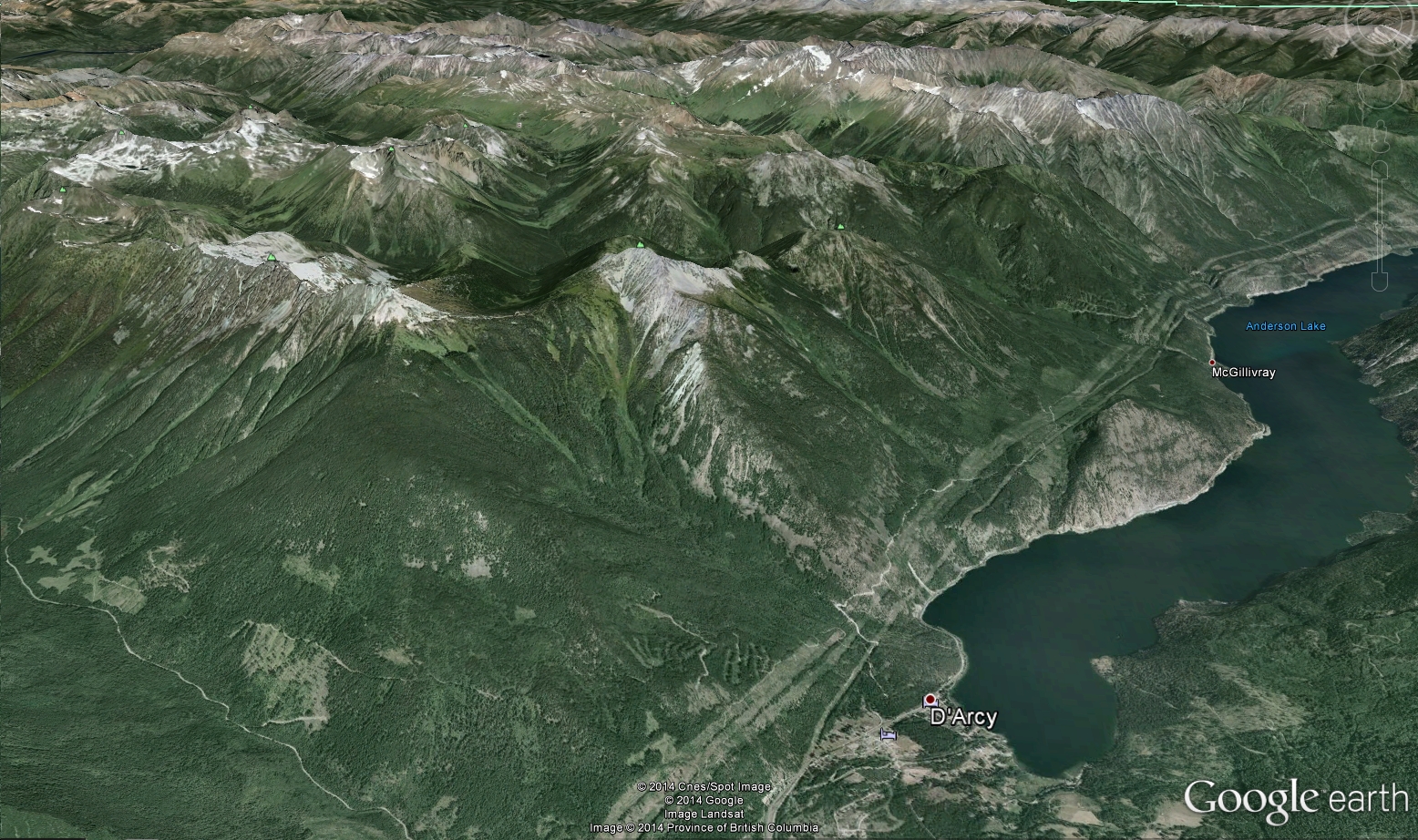An Intergenerational Experience with Google Earth

The power of old meets new was on the big screen for me the other day. I was helping clear an ancient Spirit Trail for the N’Quatqua Indian Band in the rugged Bendor Mountain range about an hour’s drive north of Pemberton, BC, when our crew suddenly ran out of trail. We searched and searched but the trail just seemed to disappear. We knew the trail continued on but, over the past hundred years or so since the Spirit Trail was last used heavily, the earth seemed to have shifted and swallowed a portion of it. This is not unusual. Landslides, forest fires and tree falls can obliterate a trail in no time.
We returned to the village that night to the home of our host family. I was messing around on the Google Earth computer program trying to figure out where the trail went when a couple elders popped in for a visit.
After explaining to them about Google Earth, they offered to help. We were zooming around using a Google Earth function that makes you feel you are in a helicopter buzzing over the treetops in a 3D landscape. One of the elders, who had been on this trail as a child, closed his eyes and told a story about the trail that had been passed down through his family for generations. He started describing attributes of the trail and the landscape while the rest of us tried to locate the place he was talking about on Google Earth.
You see, First Nations people historically had no written language. They had an oral tradition and children learned about the important things in life through storytelling from elders and practical experience in the bush. As the elder spoke about the trail, he created in our minds a rich tapestry of landscape features so that after a while, we all had a very clear visual image in our minds of the landscape through which the lost part of the trail likely passed.
We zoomed around on Google Earth for a while when suddenly a family member who was listening in on the story and watching the computer screen said, “Stop! That’s it, right there.” He pointed to a little lake a little rocky bluff and a ring of trees that was situated just so, and said “that is the place you have just been describing in your story!” The elder who was telling the story opened his eyes, looked calmly at the computer screen, and said, “of course it is, I was just describing it to you dummies!”
The next morning we packed up our backpacks once again and headed into the mountains. After a day of hiking on the trail, it disappeared as it had before. But this time we had a smart phone with the picture of the lake, cliff and ring of trees situated just so. We used that image to break through the bushes for a half hour till we arrived at the lake. We immediately found the trail and followed it backwards. Sure enough, a landslide had obliterated a hundred metres of the trail. After a few hours of saw and clipper work we were able to connect the two links and continue on our trail clearing expedition.
We never would have found that missing piece of trail without the merger of two very different but equally effective technologies: one was the brain of a First Nation elder programmed to recount vivid visual memories from the distant past. The other was Google Earth. Without the two working in tandem, our trail clearing mission would have ended in defeat. Perhaps it is indeed possible to unite these two forms of intelligence into a collective wisdom to all of our benefit.
Spirit Trails are a “catch-all” term used to describe special trails that have been used since the beginning of time for spiritual purposes, hunting, trapping and for the collection of food and medicine plants.
The fact that the many Spirit Trails on which the Wilderness Committee has laboured alongside First Nation youth were initially visible at all is a testament to how heavily they were used historically. Ordinary recreation trails will completely disappear in 10 to 20 years if not maintained. Here on the Bendor Mountains Spirit Trail, however, and in many other areas with Spirit Trails, 10,000 years of footprints can literally turn a trail into pavement, with a few exceptions obviously!
Many First Nations are clearing their Spirit Trails so that the youth of today and tomorrow can access the wilderness more easily and safely to practice ancient traditions. Cultural reaffirmation is spreading like wildfire throughout First Nation communities like N’Quatqua. Luckily, some elders who are keepers of the ancient knowledge are still with us and are teaching youth how to live the good life, and find a balance between traditional and new practices, and telling their ancient stories about hiking the trails and life in the wilderness.
If you would like to join a Wilderness Committee Spirit Trail work party, just give us a shout. Each summer we send teams of volunteers into the wilderness to work alongside our First Nation allies to locate and clear ancient trails. The more First Nations use the land, the less likely it is to be clearcut or otherwise spoiled by industrial greed.
Andy Miller